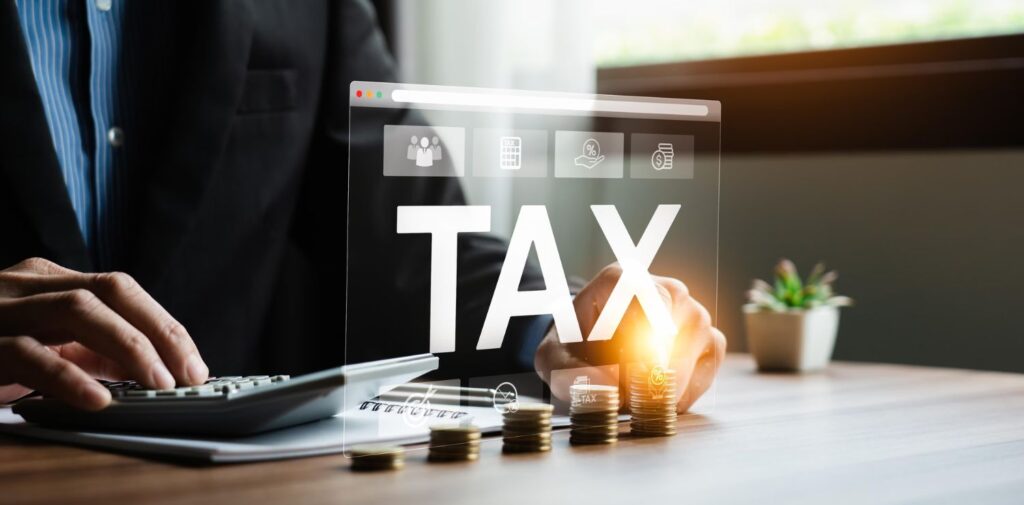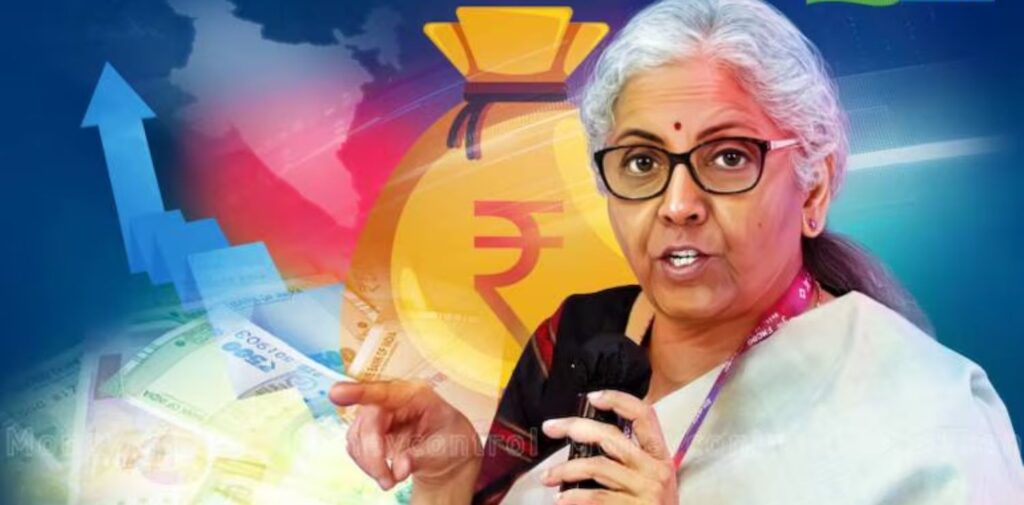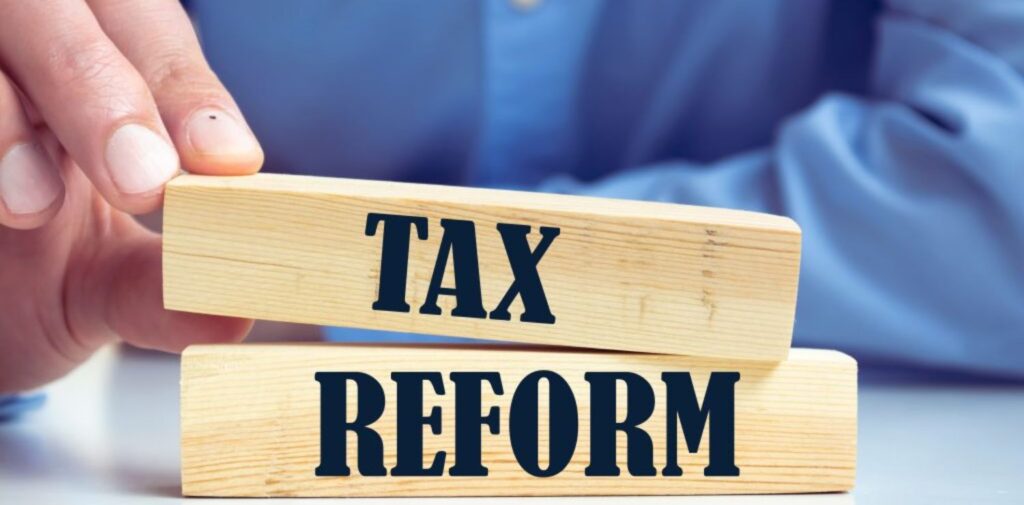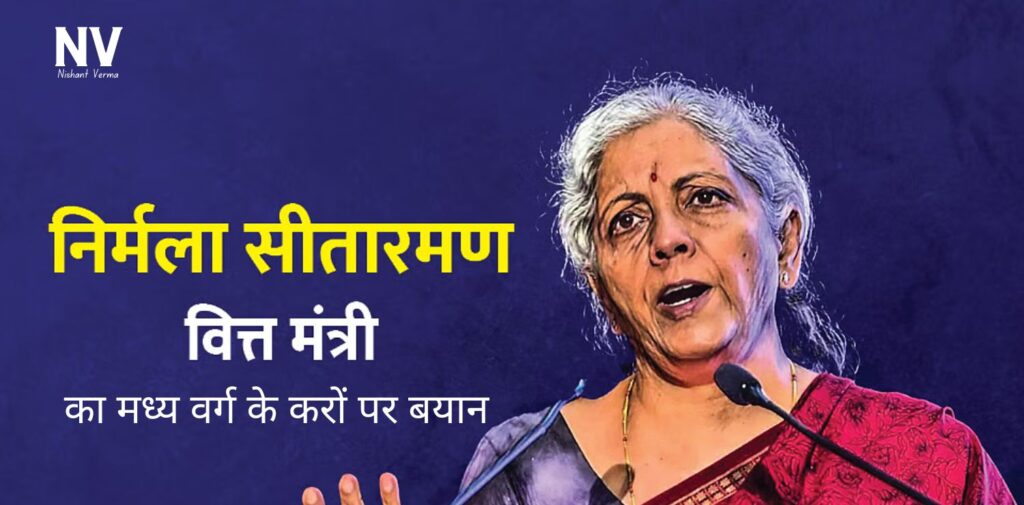Finance Minister Nirmala Sitharaman recently made headlines with her statement at the Pondicherry Lit Festival, where she acknowledged the need to reduce the tax burden on India’s middle class. She noted that taxation is a key concern and indicated that the government is considering steps to alleviate this burden. Her comment, “I will humbly submit, reducing the burden of taxation is one thing which I will have to address,” has sparked discussions on the current state of the Indian economy, the challenges faced by the middle class, and potential policy changes.
But what does this mean for the Indian market and the country’s economic situation? In this article, we analyze the impact of high taxes on the middle class, the role of the government, and the potential implications for the market.
What is the Current Tax Situation for the Middle Class in India?
The Indian tax system has been a subject of debate for years, particularly about its impact on the middle class. Currently, income tax rates for individuals range from 5% to 30% depending on income levels. While this may seem reasonable, the reality is that other taxes, such as GST on goods and services, and indirect taxes on essential items like fuel, significantly increase the overall tax burden.
The middle class often finds itself squeezed between inflation and high taxation. On one hand, they do not qualify for many of the subsidies and benefits provided to the lower-income groups. On the other, they have limited opportunities for tax deductions compared to higher-income groups, who often use investments and business expenses to reduce their taxable income.

How Does High Taxation Affect the Middle Class?
High taxation affects the middle class in several ways:
Reduced Disposable Income: A significant portion of their earnings goes towards taxes, which leaves less disposable income for savings, investments, or discretionary spending.
Limited Wealth Creation Opportunities: With higher tax outflows, the middle class has limited ability to invest in wealth-creating assets such as real estate, stocks, or businesses.
Higher Cost of Living: Indirect taxes on essential goods and services, including electricity, fuel, and groceries, further increase the cost of living, making it difficult for the middle class to maintain their standard of living.
Psychological Impact: High taxes can lead to dissatisfaction and a sense of being overburdened, which may contribute to reduced consumer confidence and lower spending in the economy.
Why is the Middle-Class Important for Economic Growth?
The middle class is considered the backbone of any economy due to its spending power, savings, and investments. In India, the middle class plays a crucial role in driving demand for goods and services, which in turn fuels business growth and job creation. When the middle class is financially stable, they are more likely to invest in real estate, buy consumer durables, and spend on education and healthcare—sectors that are vital for long-term economic stability.

What Are the Government’s Options to Reduce the Tax Burden?
Given the importance of the middle class, what can the government do to ease their tax burden? Here are a few strategies that could be considered:
- Increase the Basic Exemption Limit: Currently, the basic exemption limit is set at ₹2.5 lakh for individuals. Raising this limit to ₹5 lakh or more could significantly reduce the tax liability for middle-income earners.
- Introduce Higher Deductions for Essential Expenditures: Providing higher deductions for expenditures like home loans, education, and healthcare could help the middle class save more on taxes.
- Rationalize GST Rates: The government could consider lowering GST rates on essential goods and services to provide relief to the middle class.
- Expand Tax Slabs: Creating more income tax slabs could ensure that individuals with marginally higher incomes are not disproportionately taxed.
How Would Lower Taxes Impact the Indian Market?
Reducing the tax burden on the middle class could have several positive outcomes for the Indian market:
- Increased Consumer Spending: With more disposable income, the middle class is likely to spend more on consumer goods, driving demand and boosting sectors like retail, real estate, and automobiles.
- Higher Savings and Investments: Lower taxes would allow the middle class to save more, which could translate into increased investments in mutual funds, stocks, and other financial instruments.
- Improved Business Confidence: Increased spending and investment would boost business confidence, leading to expansion and job creation.
- Stabilized Inflation: With higher disposable incomes, demand for essential goods could stabilize, leading to controlled inflation rates and better purchasing power.

What Are the Challenges in Implementing Tax Reforms?
While reducing taxes sounds ideal, there are several challenges that the government would need to address:
- Revenue Shortfall: Lower taxes could lead to a revenue shortfall for the government, which could impact spending on critical sectors like infrastructure, healthcare, and education.
- Fiscal Deficit: India already has a high fiscal deficit, and reducing taxes could widen the gap, leading to potential borrowing and increased national debt.
- Political Resistance: Tax reforms are often met with political resistance, as they require balancing the interests of various economic groups.
What Does the Future Hold for India’s Middle Class?
Given the recent statements by Finance Minister Nirmala Sitharaman, it’s clear that the government is aware of the middle class’s concerns. While immediate changes may not be on the horizon, these discussions could pave the way for future reforms aimed at providing relief to middle-income earners.
As the Indian economy continues to grow, the government will need to ensure that the benefits of this growth reach all sections of society, including the middle class. If tax reforms are implemented effectively, they could help unleash the true potential of India’s middle class, driving the country towards sustained economic prosperity.
Conclusion: FM Nirmala Sitharaman
The statement by FM Nirmala Sitharaman has reignited the debate on middle-class taxation in India. While the current tax burden is high, there are numerous opportunities for the government to ease this pressure. By implementing targeted tax reforms, India could significantly improve the financial well-being of its middle class, which in turn would have a ripple effect on the entire economy. The path ahead is challenging, but with the right policies, the government can transform India’s economic landscape and position the country for long-term growth and prosperity.




